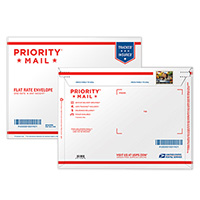
If the dimensional weight exceeds 70 pounds, the mailer pays the 70-pound price.If the final result exceeds 1,728 cubic inches, divide the result by 166 and round up (see 604.7.0) to the next whole number to determine the dimensional weight in pounds.Multiply the result by an adjustment factor of 0.785.Round off (see 604.7.0) each measurement to the nearest whole inch. Measure the length, width, and height in inches at their extreme dimensions.If the dimensional weight exceeds 70 pounds, the customer pays the 70-pound price.ġ.3.2 Determining Dimensional Weight for Nonrectangular Parcelsįollow these steps to determine the dimensional weight for a nonrectangular parcel:.If the result exceeds 1,728 cubic inches, divide the result by 166 and round up (see 604.7.0) to the next whole number to determine the dimensional weight in pounds.Multiply the length by the width by the height.Measure the length, width, and height in inches.1.3.1 Determining Dimensional Weight for Rectangular Parcelsįollow these steps to determine the dimensional weight for a rectangular parcel: Postage for parcels addressed for delivery to Zones 1-9 and exceeding 1 cubic foot (1,728 cubic inches) is based on the actual weight or the dimensional weight (as calculated in 1.3.1 or 1.3.2), whichever is greater.


1.3 Dimensional Weight Price for Low-Density Parcels to Zones 1-9 See Notice 123-Price List for applicable Priority Mail retail prices.

The minimum postage amount per addressed piece is the 1-pound price. For example, if a piece weighs 1.2 pounds, the weight (postage) increment is 2 pounds. USPS Marketing Mail Eligibility Decision Treeġ20 Retail Mail Priority Mail 123 Prices and EligibilityĢ.0 Basic Eligibility Standards for Priority Mailģ.0 Content Standards for Priority Mail 1.0 Prices and Fees 1.1 Price ApplicationĮxcept under 1.4 through 1.6, Priority Mail retail prices are based on weight and zone and are charged per pound any fraction of a pound is rounded up to the next whole pound.Designing Letter and Reply Mail (PUB 25).


 0 kommentar(er)
0 kommentar(er)
